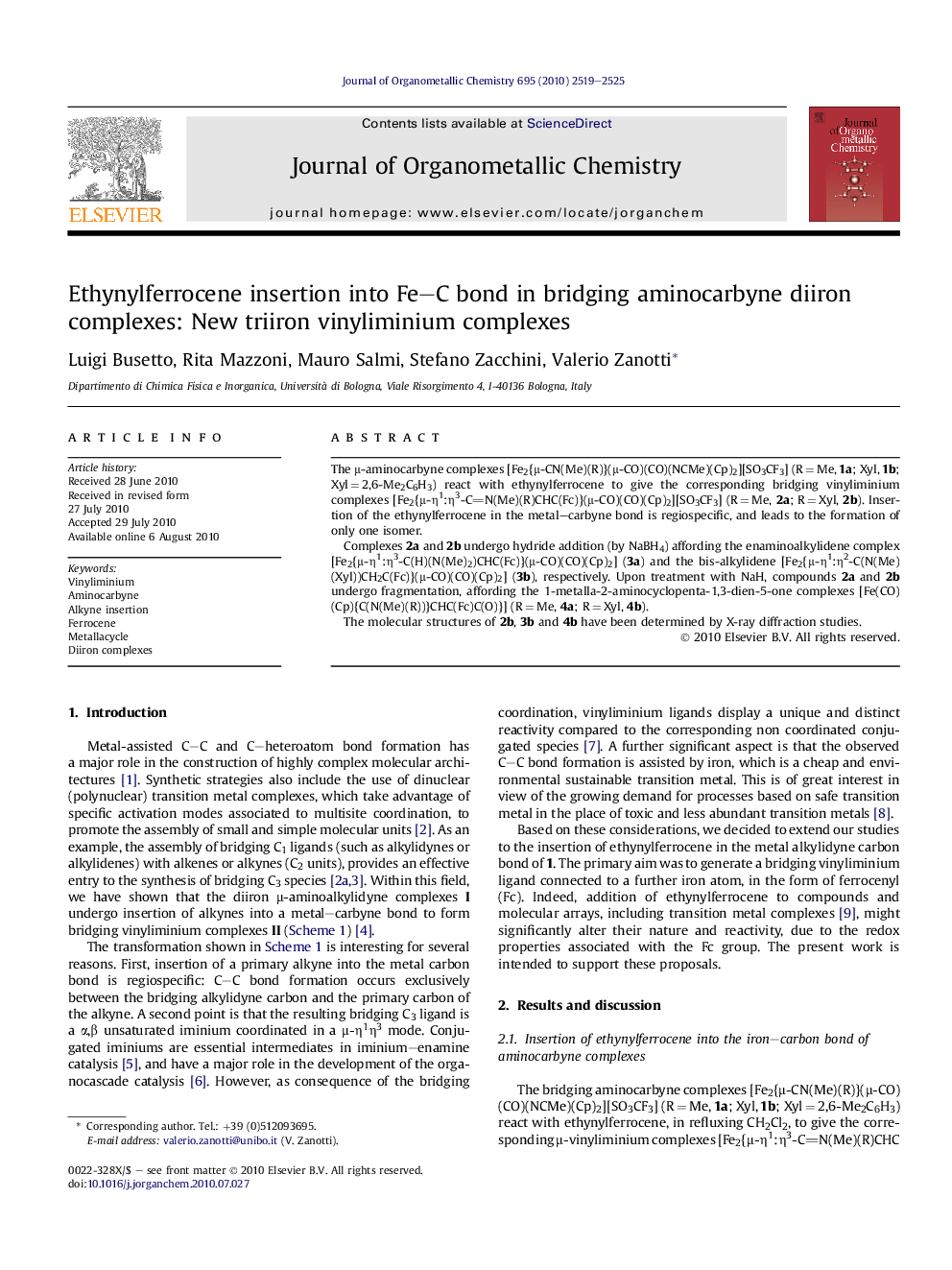| Article ID | Journal | Published Year | Pages | File Type |
|---|---|---|---|---|
| 1326797 | Journal of Organometallic Chemistry | 2010 | 7 Pages |
The μ-aminocarbyne complexes [Fe2{μ-CN(Me)(R)}(μ-CO)(CO)(NCMe)(Cp)2][SO3CF3] (R = Me, 1a; Xyl, 1b; Xyl = 2,6-Me2C6H3) react with ethynylferrocene to give the corresponding bridging vinyliminium complexes [Fe2{μ-η1:η3-CN(Me)(R)CHC(Fc)}(μ-CO)(CO)(Cp)2][SO3CF3] (R = Me, 2a; R = Xyl, 2b). Insertion of the ethynylferrocene in the metal–carbyne bond is regiospecific, and leads to the formation of only one isomer.Complexes 2a and 2b undergo hydride addition (by NaBH4) affording the enaminoalkylidene complex [Fe2{μ-η1:η3-C(H)(N(Me)2)CHC(Fc)}(μ-CO)(CO)(Cp)2] (3a) and the bis-alkylidene [Fe2{μ-η1:η2-C(N(Me)(Xyl))CH2C(Fc)}(μ-CO)(CO)(Cp)2] (3b), respectively. Upon treatment with NaH, compounds 2a and 2b undergo fragmentation, affording the 1-metalla-2-aminocyclopenta-1,3-dien-5-one complexes [Fe(CO)(Cp){C(N(Me)(R))}CHC(Fc)C(O)}] (R = Me, 4a; R = Xyl, 4b).The molecular structures of 2b, 3b and 4b have been determined by X-ray diffraction studies.
Graphical abstractNew triiron vinyliminium complexes are obtained by insertion of ethynylferrocene in the Fe–C bond of bridging carbine complexes. The reactions of these new compounds with hydrides (NaBH4 and NaH) are also reported.Figure optionsDownload full-size imageDownload as PowerPoint slide
